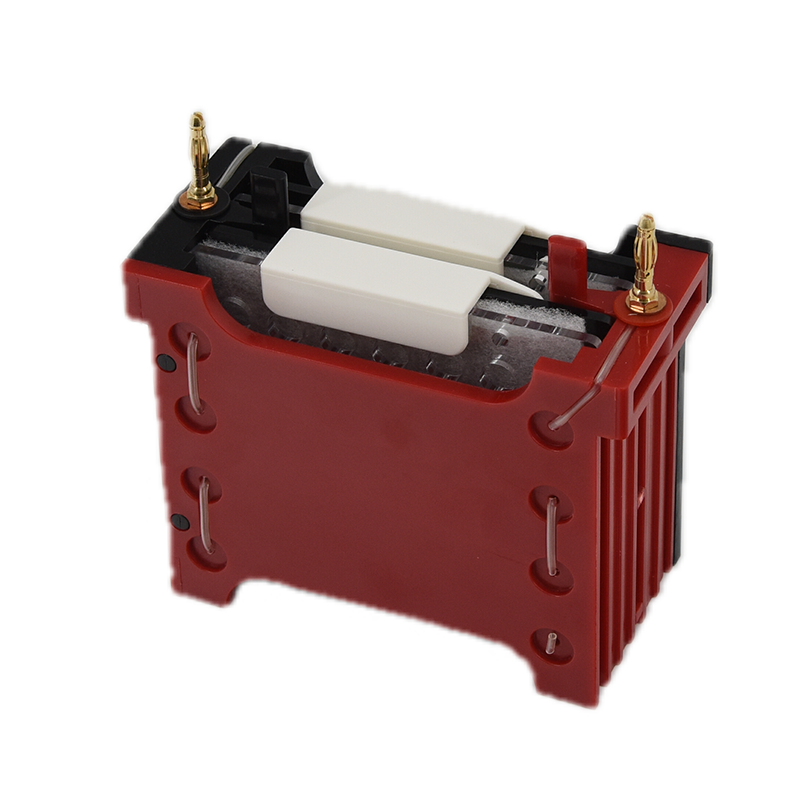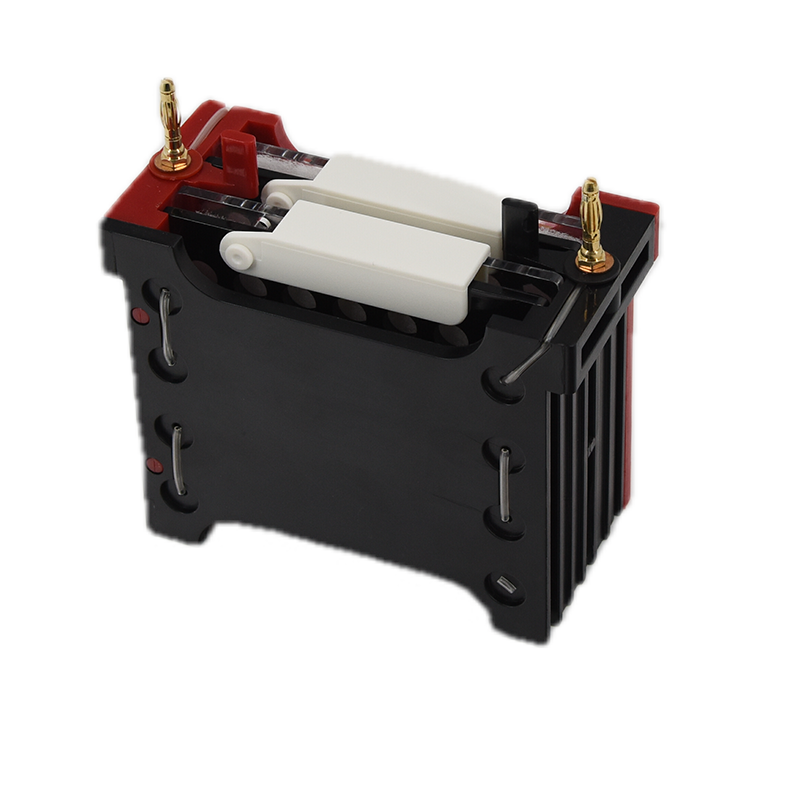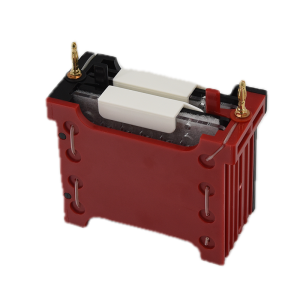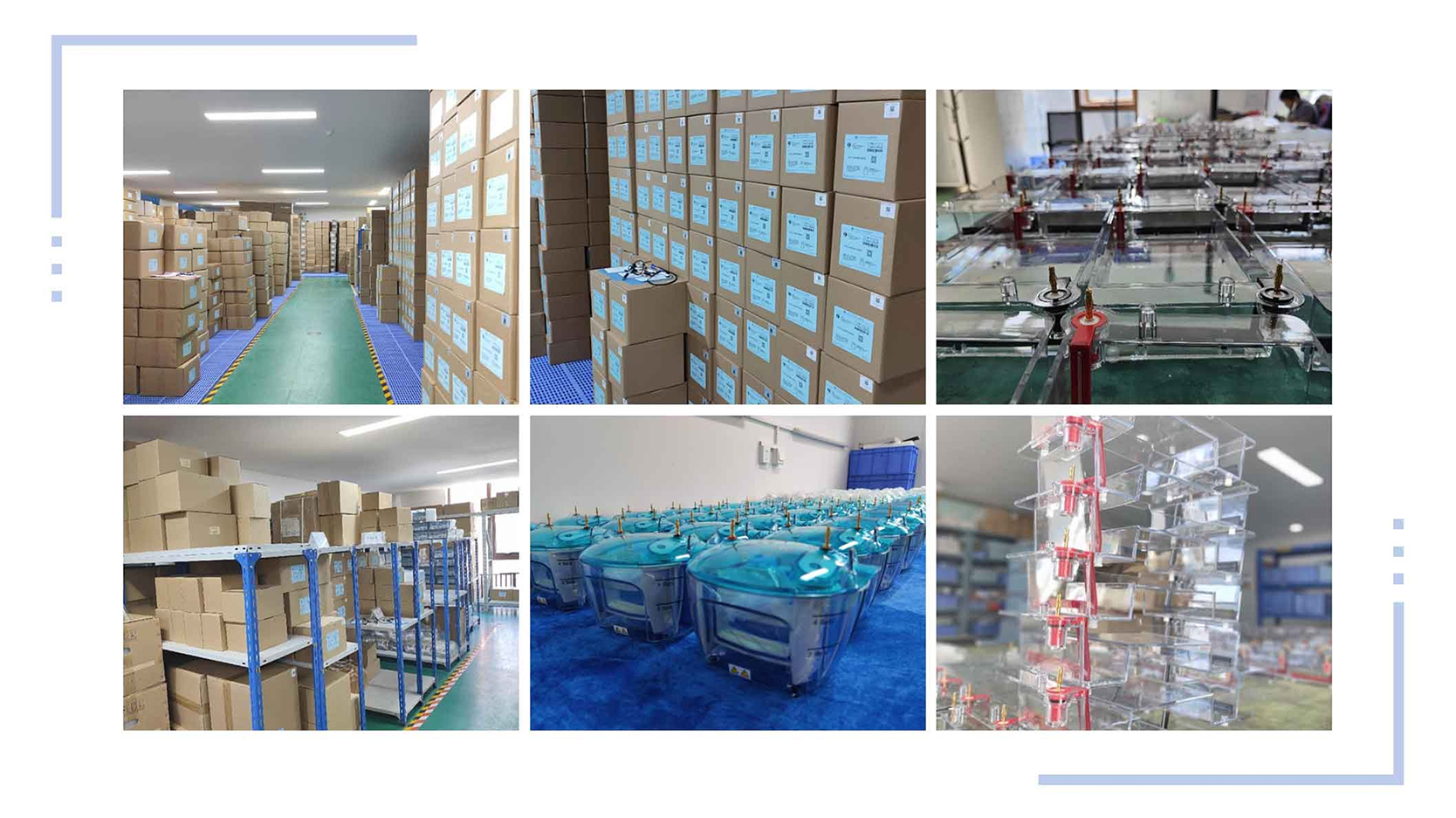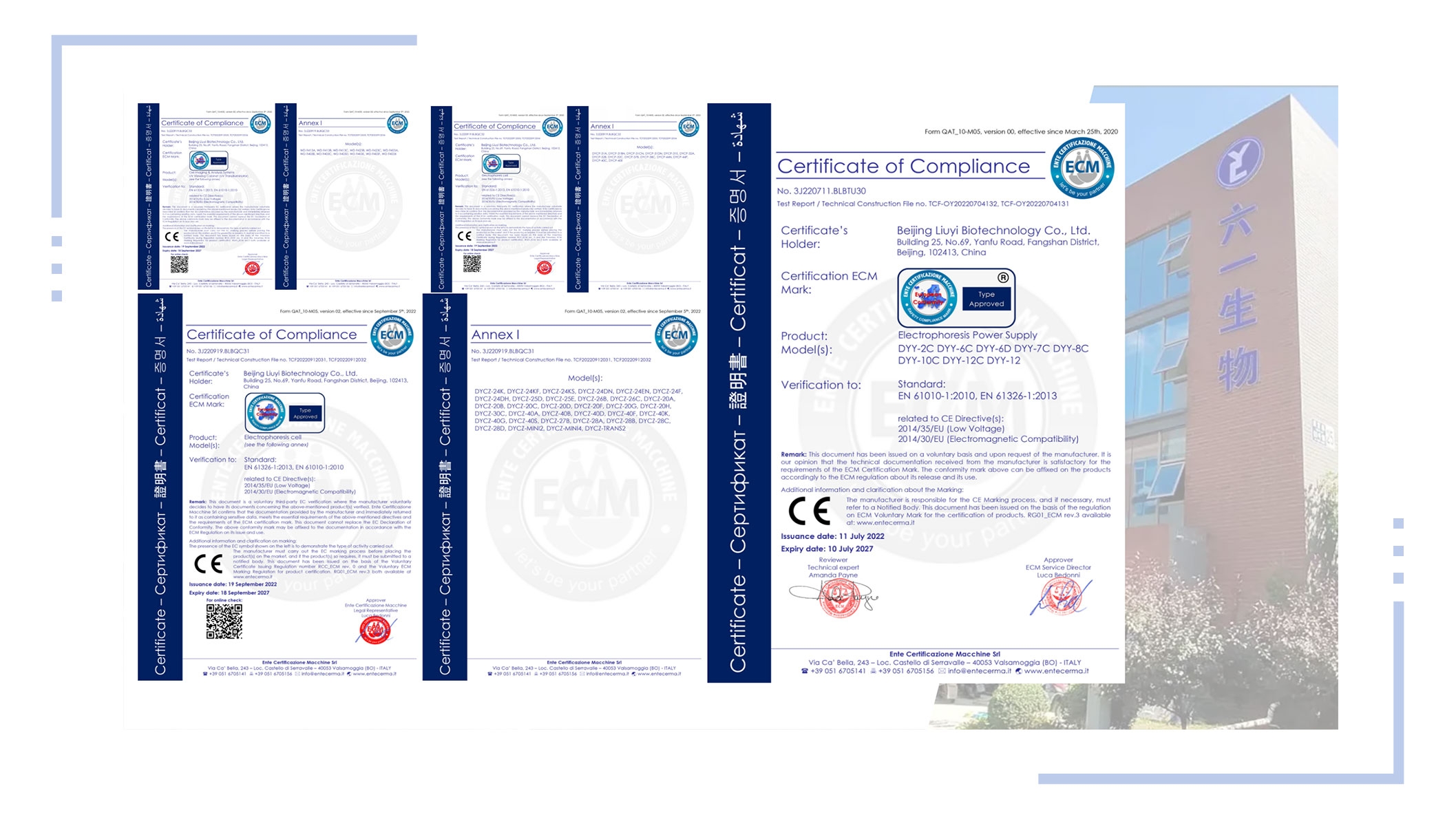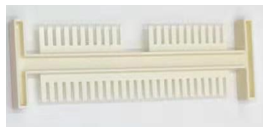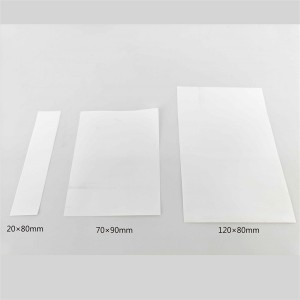DYCZ-40D Electrode Assembly
Description
An electrophoresis system consists of two main components: a Power Supply and an Electrophoresis Chamber.The power supply supplies power. The "power," in this case, is electricity. The electricity that comes from the power supply flows, in one direction, from one end of the electrophoresis chamber to the other. The cathode and anode of the chamber are what attracts oppositely charged particles.
Inside the electrophoresis chamber, is a tray--more precisely, a casting tray. The casting tray consists of the following parts: glass plate which goes in the bottom of the casting tray. The gel is held in the casting tray. The "comb" looks like its name.The comb is placed in slots on the side of the casting tray.It is put in the slots BEFORE the hot, melted gel is poured. After the gel solidifies, the comb is taken out. The "teeth" of the comb leave small holes in the gel that we call "wells." Wells are made when the hot, melted gel solidifies around the teeth of the comb. The comb is pulled out after the gel has cooled, leaving wells. The wells provide a place to put the particles you wish to test. A person must be very careful not to disrupt the gel when loading the particles. Cracking, or breaking the gel will likely affect your results.






